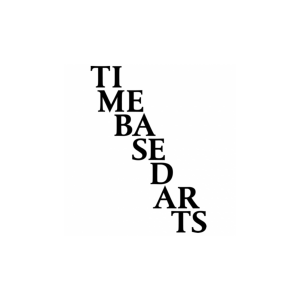
East Meets Western: Time Based Arts Creates Technicoloured Tumbleweeds for ThirtyTwo

Last week, cinema advertising brand Pearl & Dean released their latest (and long-awaited) cinema commercial for 2016. Following on from last year’s Back of the Head Actor spoof, the creative team at Brothers and Sisters have devised a charmingly funny companion film to once again celebrate the ‘unseen’ heroes of filmmaking. In the latest instalment we see the trials and tribulations of ‘The Tumbleweed Trainer’.
The two-minute long mockumentary follows, “a lady no self-respecting director could do without”. A woman of unique talent, who has dedicated her life to wrangling stray tumbleweeds. The tumbleweed trainer ensures her twiggy friends perform on cue at the crucial moment.
Whilst ‘Tumbleweed Trainer’ is a fictional profession, the film tapped into real film craftsmanship at all stages of the production process, from conception through to post production, music, and sound, to pay homage to the classic era of the Western film genre.
“We were sold on the project as soon as Will and Dylan started talking to us about it.” Comments Simone Grattarola, Head of Colour at Time Based Arts. “The whole film is beautifully crafted from art direction to music and everything in between.”
Thirtytwo (Pulse’s directing duo, Dylan Southern and Will Lovelace) shot the ad on 16mm and 35mm film. The sound team at Wave even utilised vintage recording equipment and microphones from the 1940s for the voiceover, whilst the score was recorded by a real orchestra.
However getting live tumbleweeds to roll through the set on cue required more than some sticks and a wrangler when it came to the real shoot. Time Based Arts were brought on by Brothers & Sisters and Thirtytwo to create the flock of animated tumbleweeds.
TechnicolorTumbleweeds
“One of the early issues for us to consider was how to add character to an inanimate object.” Explains Mike Skrgatic, Founder at Time Based Arts. “The story very much focussed on the trainer’s relationship with the tumbleweed and therefore we wanted to test ways in which we could evoke personality.”
After studying photos and videos of the real tumbleweeds taken on the shoot, the Time Based Arts team were able to run simulations that took into account the physics inherent in their movement.
“The weightier the object, the slower and more laboured it would move.” Adds Mike, “The lighter options gave a bouncy more upbeat performance so we used this movement to give them a sense of consciousness. We also rigged in a level of give or elasticity in the object. This helped massively with the realism of how the tumbleweed cushioned itself under its own weight.”
“It’s a fairly forgiving model as it’s such a complex tangle of sticks and bits. We used photos of tumbleweeds on set for our build to ensure that there was a consistency between the real and CG tumbleweeds. One part key to the integration was the amount of interaction the real tumbleweed had with the floor. We responded by creating a system that kicked up dust in random amounts to help with the contact on the sandy surface. That coupled with scans of the terrain, which were created using simple photogrammetry techniques allowed us to actually plot its journey over 3D geometry that matched the shot location.”
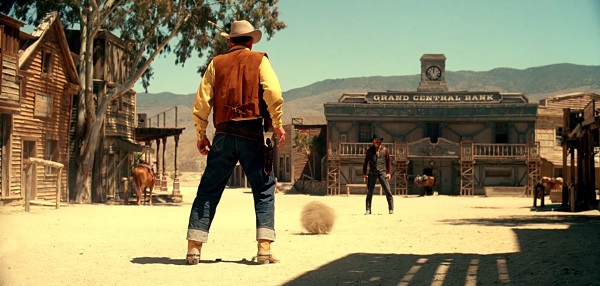
A Telecine Tribute
As big fans of the classic Western film genre, colourist Simone Grattarola and directing duo thirtytwo were in their element when it came to adding the finishing touches to ‘The Tumbleweed Trainer’ in the grading suite.
“Being a western fan certainly helped the research!” Say Simone, “Will, Dylan (Thirtytwo) and I went to see the Wild Bunch together and delved into our own personal collections of Westerns. We also took time to look through behind the scenes shorts, featurettes and trailers to get a real feel for every aspect of the genre.”
Basing the look and feel of the commercial on the golden era of westerns, Simone adds, “Think Ford and Hawks - films like Rio Bravo and The Searchers. From there we studied the clothes and the aspects of the Technicolor process. We felt having colourful clothes would really help us in the grade.”
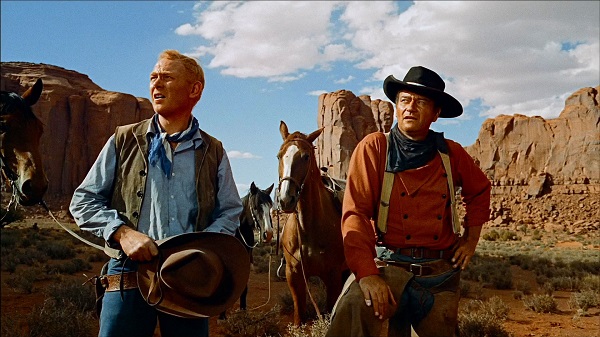
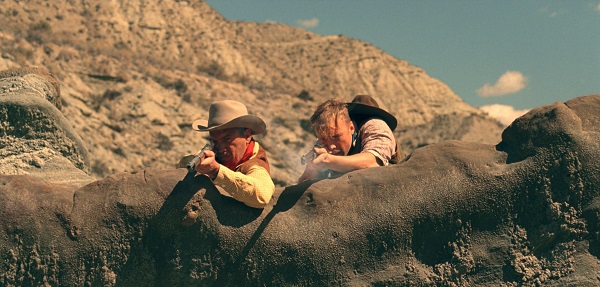
Thirtytwo shot the commercial on 16mm and 35mm film to give the film the authentic aesthetic of classic cinema. However the process in post production now differs greatly to what would have been available in the golden era of Western cinema. Both stocks were scanned and then graded from the scanned files in the projection grading suite in Time Based Arts. Special lighting and effects were applied to ensure the shot film looked just like its classic influences.
“The choice of shooting on film was the bedrock to everything else” comments Simone, “Without that the look would have felt contrived. In film the real texture is already there so we didn’t have to add grain in the grading suite. When it came to the ‘behind the scenes’ footage I anticipated that, as captured moments, it probably wouldn’t spend much time with a colour timer, so I created an unevenness to those shots. I also added a false exposure change and made shots underexposed or overexposed in places.”
“When it came to the technicolor film we were aware that the three colour strip process would have ended by the time films like the Searchers were shot. However we wanted to keep the richness of the colours and in each shot we’d always heighten one primary colour above all others. In the shot of the hero gunslinger looking to camera, I heightened the eyes to echo those of Henry Fonda.”
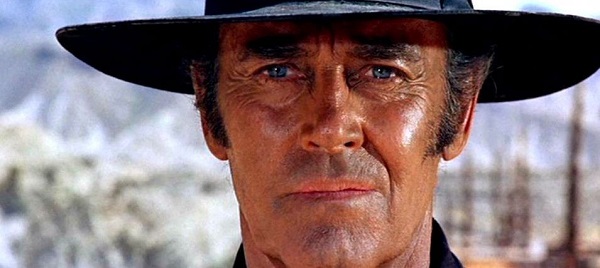
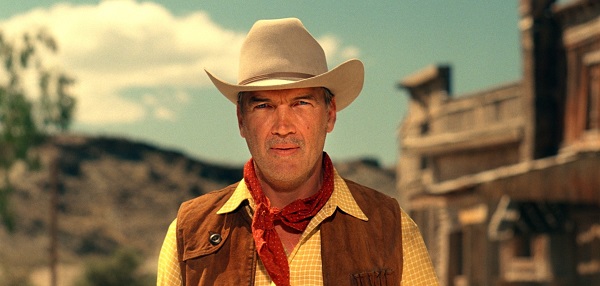
The monochrome ‘behind the scenes’ footage in ‘The Tumbleweed Trainer’ were shot in a 4:3 format to contrast the widescreen technicolor Duel of Desire film footage.

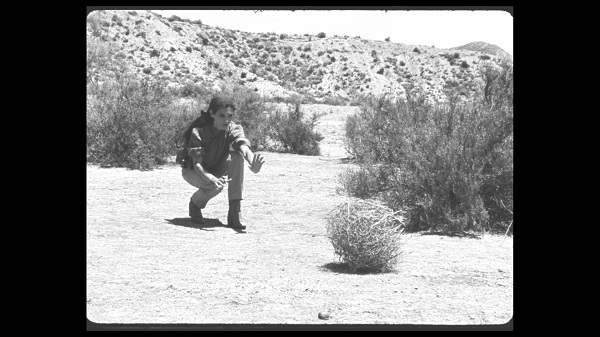
“We felt having the difference between the16mm and the Technicolor scope of the 35mm would create a lot of impact especially when viewed in the cinema.” Explains Simone “ Will and Dylan made that decision to shoot 4:3 which help make the movie sections really stand out when we cut to widescreen. For me looking at it finished the real homage is to the craft of how films were made back then and how we should continue making them.”
The Tumbleweed Trainer was first aired in cinemas on 27th September.







